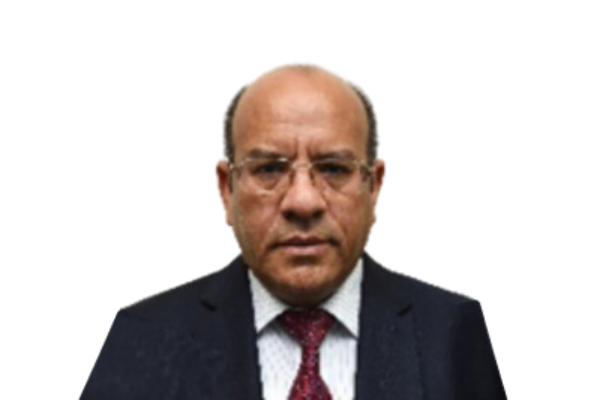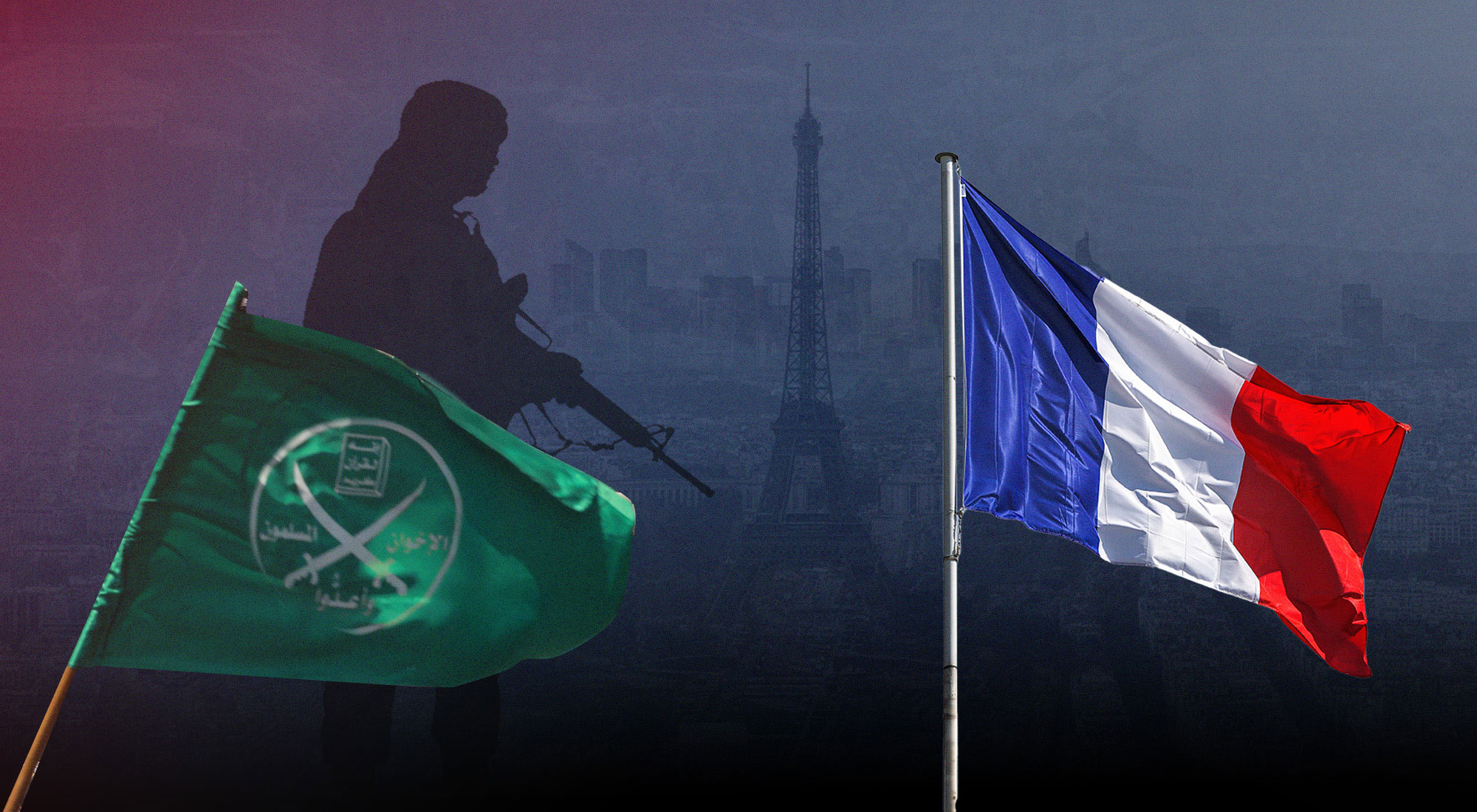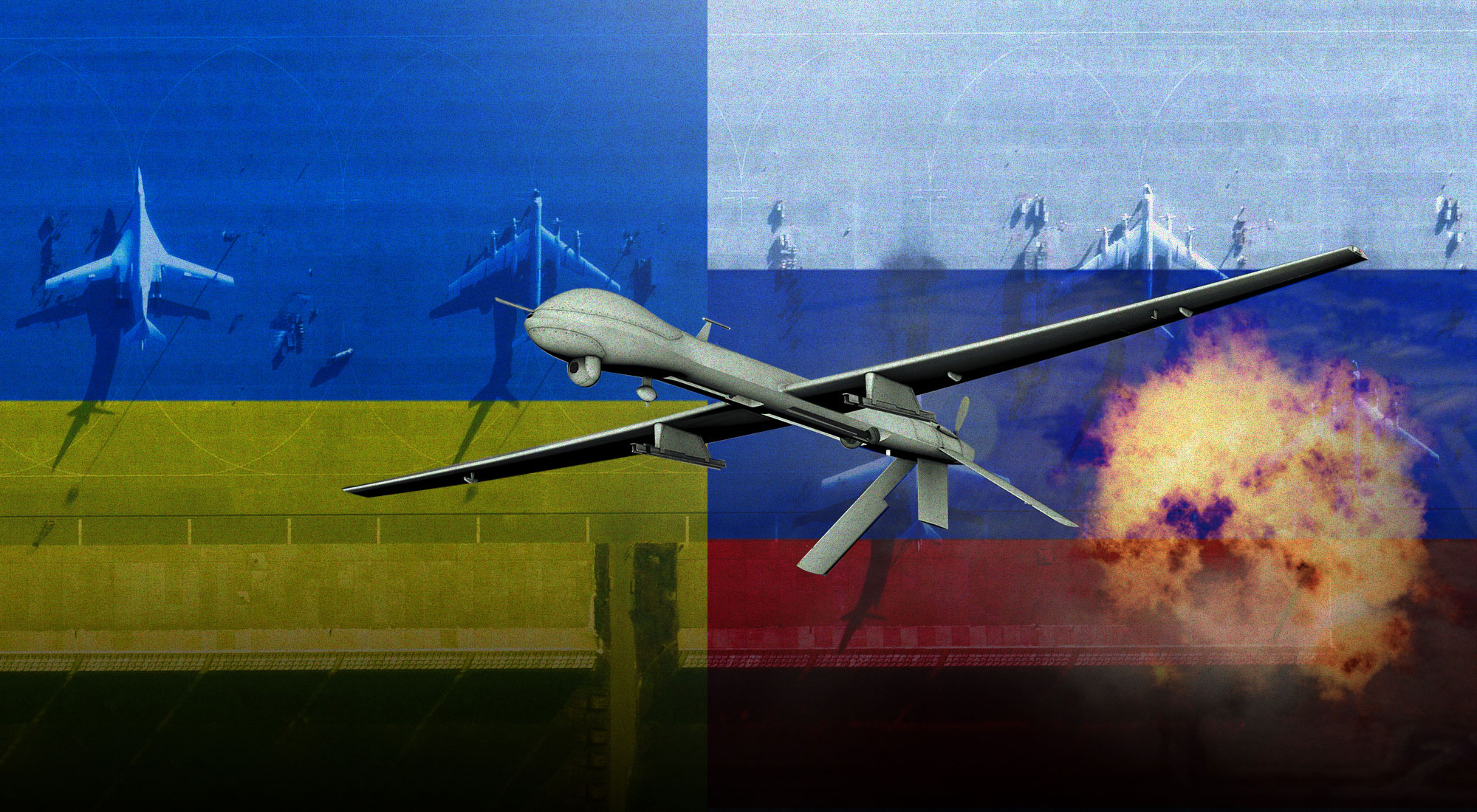Iraqi Prime Minister Mustafa Al-Kadhimi survived an assassination attempt on November 7, 2021 when three explosives-laden drones targeted his residence in the heavily fortified Green Zone of Baghdad. Security forces shot down two drones while the third one struck the building, causing some damage and injuring some of Al-Kadhimi’s bodyguards. No one has claimed responsibility for the attack as of November 11.[1]
The Iraqi authorities have opened an investigation to identify the launching point of the drones and to determine who was behind the attack. Regardless of the results of the investigation, the failed attempt to assassinate the Prime Minister and the Commander-in-Chief of the Armed Forces raises many issues and questions about the future of the political and security situation in Iraq. These are particularly significant in the context of the outcome of the parliamentary elections held on October 10, 2021.
This paper aims to analyze the implications of the assassination attempt, related political and security circumstances and its likely impact, especially with regard to the relations between the state and pro-Iran armed factions known as loyalist factions or “Loyalist Mobilization”. These factions, especially “Hezbollah Battalions” and “League of the Righteous” are the dominant within the “Popular Mobilization Forces” which are legally part of the Iraqi Armed Forces.[2]
Implications
- 1. The Prime Minister and the Commander-in-Chief of the Iraqi Armed Forces is the constitutional and hierarchical head of the political and security system in Iraq. Although his term in office ended, he is leading a caretaker government until a new one is formed based on the results of the recent parliamentary elections. This attack marked a shift compared with such attempts that took place in Iraq in recent years, which often targeted political activists rather than high-ranking government officials. Thus, the one who planned the assassination of Al-Kadhimi wanted to create chaos, and a political and security vacuum in the country by eliminating the head of the caretaker government.
There are many obstructions to the formation of a new government due to the bickering over the election results and disagreement on identifying which coalition has the largest bloc in parliament. Given these complications and contentions, some people suggest the possibility of choosing Al-Kadhimi again as a consensual candidate in order to overcome the state of heated political polarization over election results.
Thus, the assassination attempt also aimed to block the possibility of a second term for Al-Kadhimi as prime minister, or at least to send a message to Al-Kadhimi and other political elites in Iraq. The perpetrators of the drone attack wanted to prove their capability to strike the head of the government inside the high-security Green Zone, implying that they can easily strike against any other political opponents anywhere in Iraq.
- The attack marked a qualitative shift in armed attacks. Earlier, pro-Iran armed factions and small affiliated groups known as “Katyusha cells” were used to launch attacks against the American embassy in the Green Zone and some Iraqi military bases hosting American and international coalition troops fighting the ISIS over the past years. The weapons they used in these attacks were mainly Katyusha rockets, and at times improvised explosive devices.
However, several months ago, these groups started to use explosives-laden drones in their attacks. The use of drones to target the Green Zone has become a serious challenge to the Iraqi security authorities, as it has become easy for armed non-state actors to acquire these drones and deploy them, while it is difficult for conventional air defense systems to shoot down small-sized drones flying at low altitudes.[3]
- The Green Zone is known to be heavily fortified as it hosts embassies and government buildings. It was regularly the target of Katyusha rocket attacks and now has become increasingly the target of explosives-laden drone attacks. These drones are widely used by armed non-state actors who are loyal to Iran in the Arab region, such as Hezbollah in Lebanon, Houthis in Yemen, and Hamas in Gaza. Iran manufactures types of these drones and provides them to its agents. These agents constitute one of the frontline pillars of Iran’s security and defense policy. Iran calls this policy its forward-defense strategy, which enables it to confront its adversaries and enemies through its proxies who are based in weak and splintered Arab countries — without getting involved in direct confrontations with them and without harming the Iranian people as a result of such confrontations.[4]
- The “Loyalist Mobilization” factions downplayed the drone attack and expressed doubts about the assassination attempt on Al-Kadhimi. For example, Abu Ali Al-Askari, the security leader of “Hezbollah battalions”, mocked the reports of the assassination attempt, saying “playing the role of the victim has become an obsolete and immoral method … and no one in Iraq has the desire to waste a drone on the house of a former prime minister”. Al-Askari attacked every Iraqi and every party supporting Al-Kadhimi, writing “God curse everyone who supported you”.
The “League of the Righteous” described the assassination attempt as something that was fabricated in order to distract public opinion and cover up the crimes of shooting the protesters who rejected the election results. Some loyalist factions accused a third party of involvement in the assassination attempt with a view to sowing sedition in the country, and called on relevant authorities to investigate the issue. This is in line with Iran’s position, which accused foreign parties of being behind the attempt. Even when some loyalist factions condemned the assassination attempt, their condemnation was conditional. For example, the leader of the “League of Righteous”, Qais Al-Khazali, condemned the attempt, but demanded the formation of a neutral committee to investigate the incident.[5]
- The assassination attempt confirmed once again that Iran is a major party in the political and security equation in Iraq. This was evident in the unannounced visit by the commander of Iran’s Quds Force of the Islamic Revolutionary Guard Corps (IRGC) Ismail Qaani to Baghdad hours after the announcement of the assassination attempt against Al-Kadhimi. According to media reports, Qaani held a meeting with leaders of Iraqi factions loyal to Iran, which some accuse of being involved in the assassination attempt. He also met with both the President of the Republic and the Prime Minister, and stressed Iran’s rejection of endangering any Iraqi official.
In general, the purpose of the visit was to try to contain the repercussions of what happened and clear Iran, even as the reported accusations point to the involvement of an armed group loyal to Iran in the assassination attempt. The fact that the drones used in the attack are Iranian-made adds weight to such reports. It is known that Qassem Soleimani, the former commander of the Quds Force, played a key role in establishing Iraq’s pro-Iran loyalist factions, supporting them with money and weapons, and supervising the training of their fighters in order to be used for strengthening Iranian influence inside Iraq.[6]
Circumstances
The attempt to assassinate the Iraqi Prime Minister came in the backdrop of a political and security environment that is characterized by tension and congestion.
First, let us consider the dispute over the results of the legislative elections. Following the announcement of the results of the legislative elections, the Fatah Alliance led by Hadi Al-Amiri, and other forces that participated in the elections, announced their rejection of the results on the pretext of fraud and manipulation of votes. They demanded that the process of counting and sorting of all ballot boxes be repeated manually, or that the elections be cancelled and repeated. The Fatah Alliance obtained only 17 seats, compared with the 47 seats it had obtained in the previous elections in 2018. That result had enabled it to be the second largest bloc in Parliament, next to the Sairoon Alliance led by Muqtada Al-Sadr which won 54 seats.
The Fatah Alliance brings together political forces and wings affiliated with the pro-Iran Hashd (Mobilization) factions. Some of those factions issued threats to use force to prevent the election results from being passed, ignoring the fact that the Independent High Electoral Commission (IHEC) had decided to manually recount some of the ballot boxes in response to electoral appeals. Supporters of the pro-Iran loyalist factions staged an open sit-in protest in front of some of the heavily-fortified Green Zone gates, and began threatening to storm the area to reject the election results as well as the results of the examination of appeals by the Electoral Commission.[7]
Secondly, the attempt to assassinate Al-Kadhimi took place one day after confrontations erupted between the security forces and demonstrators in support of the Loyalist Mobilization factions, especially the Hezbollah Battalions and the Asaib Ahl Al-Haq (League of the Righteous). The confrontations took place after the demonstrators tried to storm the Green Zone as threatened earlier. Those confrontations resulted in deaths and injuries among the demonstrators. The Prime Minister formed a high-level investigation committee to determine which sections of the military was involved in shooting the demonstrators. He also formed a military team with the participation of several security agencies, including the Popular Mobilization Security Department in order to secure the sit-in tents that were re-erected by the protesters against the election results.
However, the confrontations between the security forces and the demonstrators heightened the tension in the relationship between the Prime Minister and the pro-Iran factions. Some of the factions engaged in sharp criticism of the Prime Minister, to the extent of accusing him of being involved in issuing orders to shoot the demonstrators. This was accompanied by a systematic campaign of incitement against him.
For example, the Secretary-General of Kataeb Sayyid Al-Shuhada (Master of Martyrs Battalions) Abu Ala’ Al-Wala’i attacked Al-Kadhimi, writing: “I tell you (meaning Al-Kadhimi): You have to forget two things: first, repeating the farce of renewing your premiership, and second, you will not even be returned to your previous position (Director of the Intelligence Service)”. Hezbollah Battalions also issued a statement sharply criticizing Al-Kadhimi: “The issuance of orders to shoot unarmed demonstrators and shed the blood of innocent people in the arena of peaceful protest demonstrates the brutality of Al-Kadhimi and his team. This clearly reflects his tyranny and that of those that stand behind him . . . Al-Kadhimi’s criminal behavior towards our dear people began with the policies of starvation and corruption, and now it ends with repression and killing, all of which are manifestations of abuse of power.”[8] Some leaders of the loyalist factions also demanded the trial of Al-Kadhimi, and even avenging the blood of the martyrs.[9]
As the election results were a blow to the Fatah Alliance led by Al-Amiri, they accused Al-Kadhimi of being involved in rigging the elections on behalf of certain forces. For example, Abu Ali Al-Askari, the security official of the Hezbollah Battalions, accused Mustafa Al-Kadhimi and members of the Iraqi intelligence apparatus of manipulating the election results. He said: “We now know for certain that the godfather of rigging the Iraqi elections is the Prime Minister who is entrusted with the people’s votes; he dared, together with members of the intelligence service to change the election results in agreement with powerful political parties.”[10]
The election issue is only one of the many disagreements between the Loyalist Mobilization factions and Al-Kadhimi. Other thorny issues include conflicting political orientations of the two sides. In his political speech, the prime minister focused on priorities such as: confining the right to possess arms to the state, restoring the state’s prestige, subjecting the Popular Mobilization factions to state control, sparing Iraq the dangers of being an arena for settling scores between Washington and Tehran, and strengthening Iraqi-Arab relations.
Such initiatives are not acceptable to the Loyalist Mobilization factions that wish for their loyalty to the Iraqi state to remain formal, so that they would continue to benefit from its resources and capabilities, and at the same time enjoy the independence that would enable them to challenge the government when necessary. Those pro-Iranian organizations move in a wide grey area between the state and the non-state, as they are with the Iraqi state and against it at the same time.[11] Besides, they had previously accused Al-Kadhimi of being involved in the assassination of Qassem Soleimani in January 2020, when Al-Kadhimi was heading the intelligence service. The loyalist factions reject any plans or attempts to restructure Popular Mobilization in a way that makes its subordination to the state real rather than just formal.
Implications of the attack
The possible ramifications of the Al-Kadhimi assassination attempt should be viewed in light of several factors.
- There are political tensions relating to the results of the parliamentary elections, which will make it difficult and complicated to form a government.
- The security conditions in the country are fragile. Although Al-Kadhimi’s government succeeded in providing a safe environment for holding parliamentary elections, the security conditions are still fragile, especially in light of the resumption by ISIS of its terrorist activities in Iraq and the continuation of hybrid security governance in the country.
- The past experiences of Iraqi investigation committees are not encouraging. Over the years, successive Iraqi governments, including Al-Kadhimi’s, have formed committees to investigate security and political incidents. However, in most cases, the work of these committees has not yielded tangible results, as evidenced by the fact that killers of protesters and political activists have not been identified, let alone brought to justice.
- Al-Kadhimi said he knew the parties behind the assassination attempt and that they would be exposed and held accountable. Iraqi security officials also stated that a pro-Iran armed group carried out the attack, and that the drones used in it were Iranian-made. If this information is confirmed by the investigation authorities, the Iraqi government will have to accept internal pressures to take decisive action against the parties involved in the assassination attempt. If those involved in this attack are not punished, such actions will be repeated in the future. The need to reduce Iranian influence in Iraq is obvious, and will lead to a restructuring of Iraqi-Iranian relations based on new foundations.[12]
- The assassination attempt strengthened popular political support for Al-Kadhimi, which is reflected in the local, regional and international condemnations of the attack. This strengthens Al-Kadhimi’s chances of assuming the premiership for a second term, especially in the context of political blocs failing to resolve the issue of forming a new government. This may lead the blocs to choose a consensual prime minister, who could be Al-Kadhimi or someone else.
In addition, it is important to consider the possible ramifications of the assassination attempt against the backdrop of his government’s experience in dealing with the loyalist factions. The government has tried a few times to decisively confront some of those factions, but the results were not as desired. On June 25, 2020, counterterrorism forces raided a site controlled by pro-Iranian Hezbollah Battalions in Dora, to the south of Baghdad, arresting 14 of its members on charges of targeting the Green Zone with rockets. This operation was the first to target a faction of the Popular Mobilization Forces (PMF).[13]
Four days later, on June 29, 2020, the detainees were released by the PMF judge for lack of evidence. They were received in their PMF military uniforms at one of the premises of Hezbollah Battalions. On this occasion, they stepped on pictures of the prime minister, who is also the commander-in-chief of the Armed Forces. This was an insult to the Iraqi government. The government’s silence regarding the release of the detainees and such insults against the office of the prime minister and commander-in-chief gave the impression that the state was retreating in front of the loyalist factions.[14]
On May 26, 2021, Iraqi security forces arrested Qassim Musleh, leader of PMF forces in West Anbar, pursuant to Article 4 of the Anti-Terrorism Law. He was then referred for investigation on criminal charges before a joint investigation committee.[15] In response, some pro-Iran factions surrounded parts of the heavily fortified Green Zone, performing a show of force using medium and light weapons in order to pressure the government to release Musleh or hand him over to the PMF security apparatus. Eventually, Qassim Musleh was released after a short period as the Supreme Judicial Council confirmed that the evidence presented by the authorities did not prove his involvement in any crime.[16]
In assessing the ramifications of the assassination attempt, there are three possible scenarios.
- The investigation committee will fail to reach a conclusive decision about the identity of the perpetrators just as in the case of previous investigation committees that probed assassinations and rocket attacks. This would harm Al-Kadhimi’s credibility as he has already said that he knew the parties involved and promised to expose them and hold them accountable.
- The Iraqi government will respond in a limited manner. Assuming that the investigation committee finds compelling evidence about the involvement of one or more pro-Iranian groups in the assassination attempt, the government will need to respond on two levels: first, take action against the party or parties involved in the assassination attempt and second, take action against Iran, because the assassination attempt targeted a top leader of Iraq, and Iran is the supplier of drones to Iraq’s pro-Iran factions. The question here revolves around the nature and limits of the responses. In this scenario, the response of the Iraqi government will most likely be limited, such as arresting the individuals who launched the drones and bringing them to justice without punishing the leaders of the factions to which those individuals belong in order to avoid a broader confrontation in the current context of fragile political and security conditions. Al-Kadhimi’s government has become used to making limited responses that implicate opponents and let the opposing factions self-destruct.[17] As for the relationship with Iran, the matter will most likely be discussed through diplomatic channels without escalation to the point of cutting diplomatic ties. Some security plans may also be reviewed under this scenario.
- There will be clashes between the Iraqi security forces and some loyalist factions. This scenario is based on the assumption that prominent leaders in some factions will be convicted of involvement in Al-Kadhimi assassination attempt. If orders are issued to arrest them, this may lead to clashes between the security forces and those factions, especially that those factions have often flexed their muscles in the capital and near the entrances of the Green Zone. The most serious part of this scenario is that counterterrorism forces or units of the Iraqi army will clash with loyalist factions of the PMF, which is part of the Iraqi armed forces. If such confrontation occurs, it may spiral out of control, creating chaos and deeper insecurity in Iraq. Such conditions would create a favorable environment for the expansion of ISIS and the spread of foreign influence in the country. It seems Al-Kadhimi is aware of the catastrophic consequences of such a scenario. Therefore, a limited response scenario seems more likely, at least in the foreseeable future.
Conclusion
The Al-Kadhimi assassination attempt has revealed once again some of the challenges and imbalances that affect the future of the state and the political system in Iraq. In this respect, the PMF, particularly its loyalist factions, should be restructured. The law regulating them should be modified in a way that forces them report to the Ministry of Defense and reintegrates them into the Iraqi armed forces based on individual capabilities and qualifications, rather than as ideological organizations with external loyalties. Unless this happens, the loyalist factions and other PMF units will remain far from the concept of a professional army. They will also remain capable of obstructing any efforts aimed at controlling arms and asserting the sovereignty of the Iraqi state. In addition, these factions will continue to act as a conduit for Iranian influence in Iraq, which is linked to Iran’s regional and international agenda. Things will get even more serious if the PMF turns into Iraqi Revolutionary Guard Corps, similar to the Iranian Revolutionary Guard Corps.
Will the next Iraqi government, whether headed by Al-Kadhimi or someone else, be capable of doing such restructuring? That is the real challenge for Iraq.
References:
[1] “Iraqi Interior ministry: The Assassination Attempt against Al-Kadhimi Carried out by Three Drones,” Asharq Al-Awsat newspaper, November 7, 2021, https://aawsat.com/home/article/3290116/ [Arabic].
[2] Renad Mansour and Faleh A. Jabar, The Popular Mobilization Forces and Iraq’s Future, Carnegie Endowment for International Peace, April 2017; Michael Knights, Hamdi Malik and Aymenn Jawad Al-Tamimi, Honored, Not Contained: The Future of Iraq’s Popular Mobilization Forces, The Washington Institute for Near East Policy, March 2020.
[3] Dr. Hassanein Tawfiq Ibrahim, “Armed Non-State Actors and the Use of Drones in the Arab World: Current Situation and Future Prospects”, Strategic Trends series, No. 7, TRENDS Research and Advisory Center, Abu Dhabi, September 2021 [Arabic].
[4] International Crisis Group, “Iran’s Priorities in a Turbulent Middle East,” Middle East Report, No. 184 (13 April 2018), p. 4.
[5] Mobilization Factions repudiates the assassination attempt on Al-Kadhimi while videos incriminate them, alarabiya.net, November 7, 2021, https://www.alarabiya.net/arab-and-world/iraq/2021/11/07/; a conditional condemnation from armed factions about targeting the Iraqi Prime Minister, Asharq Al-Awsat newspaper, November 8, 2021, https://aawsat.com/home/article/3291166/ [Arabic].
[6] The commander of the Quds Force arrives in Baghdad hours after the attempt to assassinate Al-Kadhimi, Asharq Al-Awsat newspaper, Nov. 8, 2021. https://aawsat.com/home/article/3292491/ [Arabic]
[7] Iraq protests turn into an open sit-in, the Asharq Al-Awsat newspaper, Oct. 21, 2021. https://aawsat.com/home/article/3257981/; A 3-day “Hashd” grace period for the Electoral Commission, Asharq Al-Awsat newspaper, Oct. 21, 2021, https://aawsat.com/home/article/3263091/; Fadhel al-Nashmi, “Iraq: Protesters of the losing “Hashd” factions surround the Green Zone”, Asharq Al-Awsat, Oct. 25, 2021, https://aawsat.com/home/article/3265011 /[Arabic]
[8] Fadhel Al-Nashmi, “Relative quiet in Baghdad following a day of fierce confrontations”, Asharq Al-Awsat, Nov. 7, 2021, https://aawsat.com/home/article/3289586/ [Arabic]
[9] Ahmed Al-Suhail, “Al-Kadhimi’s assassination attempt came hours after threats made by pro-Iran militias”, Independent Arabia, Nov. 7, 2021, https://www.independentarabia.com/node/274896 / [Arabic]
[10] Iraqi Hezbollah accuses Al-Kadhimi and intelligence agents of changing the results of parliamentary elections, Egyptian Shorouk newspaper,Oct. 14, 2021, https://www.shorouknews.com/news/view.aspx?cdate=14102021&id=179a13e1-4719-4569-ba76-460d19018b19 [Arabic]
[11] International Crisis Group, “Iraq’s Paramilitary Groups: The Challenge of Rebuilding a Functioning State,” Middle East Report, No. 188 (30 July 2018).
[12] “Security Officials: An Armed Iran-backed Group Carried out the Attack on Al-Kadhimi” [Arabic], Asharq Al-Awsat, 8/11/2021, https://aawsat.com/home/article/3292176/
[13]. Michael Knights, “Testing Iraq’s Ability to Crack Down on Anti-U.S. Terrorism,” PolicyWatch 3341, Policy Analysis, The Washington Institute for Near East Policy, June 26, 2020,
[14]. “Iraq Enters an Era of Uncontrolled Arms after the Hezbollah Battalions Incident” [Arabic], Asharq Al-Awsat, 7/1/2020, https://aawsat.com/home/article/2363941; “14 Pro-Iran Fighters who Targeted Americans are Released in Iraq” [Arabic], Asharq Al-Awsat, 29/6/2020, https://aawsat.com/home/article/2361596/
[15]. “Iraq arrests a PMF Leader on Charges of Bombing Ain Al-Assad” [Arabic], Asharq Al-Awsat, May 27, 2021, https://aawsat.com/home/article/2993986 /
[16]. “Qaani in Baghdad to Meet with Faction Leaders after the Release of the PMF leader” [Arabic], Asharq Al-Awsat, 10/6/2021, https://aawsat.com/home/article/3018756; “A Settlement is Reached to Release the PMF Leader, and the Killing of an Intelligence Colonel Complicates the Situation” [Arabic], Asharq Al-Awsat, 9/6/2021, https://aawsat.com/home/article/3016956/
[17]. Analysis: “Iraqi Factions Self-Destruct, and Al-Kadhimi Escapes from the Abyss” [Arabic], Asharq Al-Awsat, 8/11/2021, https://aawsat.com/home/article/3291316 /








